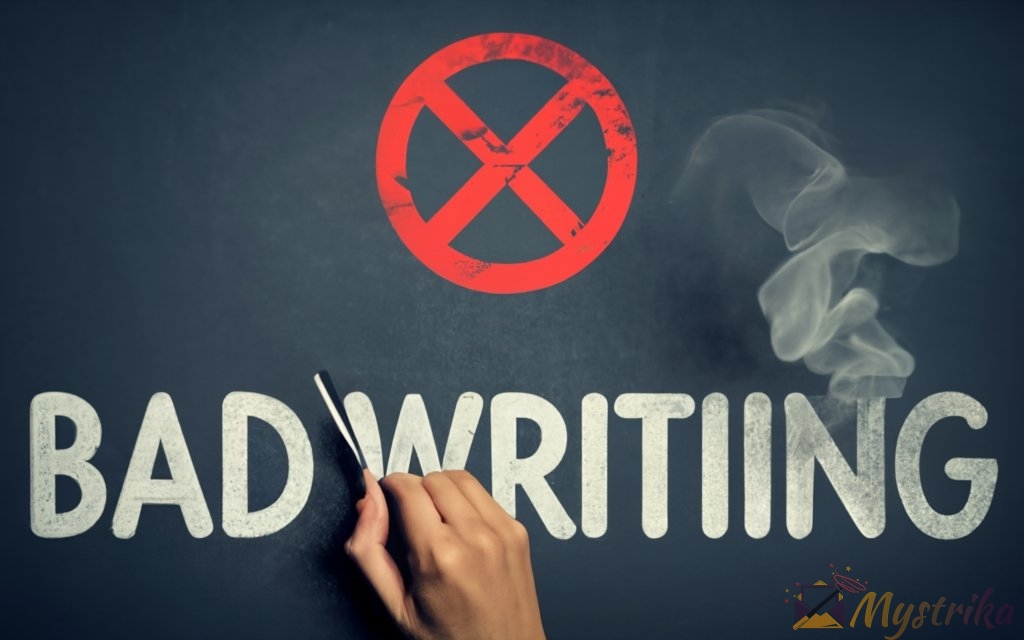We all make writing faux pas. From rambling emails to wooden dialogue, little mistakes sabotage big ideas. This guide explores common writing pitfalls and practical tips to elevate your prose. Learn to identify weak writing and transform drafts through targeted editing. Kill clichés, fix fuzzy language, add spark with precision, and master writing like the pros. Don’t let bad writing undercut your awesome ideas.
Read on to troubleshoot areas for improvement and polish your skills. You’ll be writing with clarity, grace, and professionalism in no time.
What Makes Writing “Bad”?
Strong writing skills are invaluable for effective communication, but many fall into common pitfalls that make their writing vague, confusing, or downright unpleasant to read. Let’s explore the top mistakes that can make writing bad, with examples to help you avoid these issues in your own work.
Vague, Unclear Language
Using vague, ambiguous language is one of the quickest ways for writing to go awry. When concepts are not clearly explained, readers can only grasp at the meaning instead of receiving the full picture.
For example:
The committee voted on the policy changes last Tuesday. There was some dissent, but ultimately they made a decision for the best.
This paragraph leaves the reader with more questions than answers. What policy changes? What was the dissent about? What decision did they make? The vague language forces the reader to fill in gaps themselves.
Instead, being precise and specific clarifies the meaning:
On Tuesday, the school disciplinary committee voted 7-3 to ban cell phone use during class hours, despite concerns from some parents about emergency contacts. The principal ultimately approved the decision to prioritize reducing classroom disruptions.
Using concrete details, facts, and clear explanations allows the reader to fully comprehend the situation. Avoid ambiguous phrases like “some,” “stuff,” “things,” and blank generalities. Strive for clarity and reduce vagueness.
Walls of Text With No Paragraphs
Reading a massive block of text with no breaks is visually unappealing and cognitively draining. Without paragraph separations, writing becomes an indistinguishable wall that overwhelms readers.
Consider this example:
My family recently visited the new theme park that opened last month downtown it’s called Exploria and has rides games restaurants themed areas and shows we got there right when it opened at 9 on Saturday and already there were huge crowds everywhere it was hard to walk without bumping into people the first thing we did was get a map then tried to decide which way to go we eventually headed left towards the rides since my kids really wanted to go on the rollercoasters we waited almost an hour for the HyperDrive coaster it goes from 0 to 60 miles per hour in less than five seconds down this steep hill at one point you’re completely upside down it was so intense the line for the Tidal Wave log flume was super long too so we got fast passes then went to the arcade while we waited we played some carnival games and my daughter won a huge stuffed panda bear by the time we were done in the arcade it was our window to get on the log flume we got soaked on the big plunge at the end but it was awesome after that we grabbed lunch at the food court and rested for a bit.
With no structure, reading comprehension suffers greatly. Inserting paragraphs allows readers to pause and digest information in bitesize chunks:
My family recently visited the new theme park that opened last month downtown. It’s called Exploria and has rides, games, restaurants, themed areas, and shows.
We got there right when it opened at 9 on Saturday and already there were huge crowds everywhere. It was hard to walk without bumping into people. The first thing we did was get a map, then tried to decide which way to go.
We eventually headed left towards the rides since my kids really wanted to go on the rollercoasters. We waited almost an hour for the HyperDrive coaster. It goes from 0 to 60 miles per hour in less than five seconds down this steep hill. At one point you’re completely upside down – it was so intense!
The line for the Tidal Wave log flume was super long too, so we got fast passes then went to the arcade while we waited. We played some carnival games and my daughter won a huge stuffed panda bear. By the time we were done in the arcade, it was our window to get on the log flume.
We got soaked on the big plunge at the end, but it was awesome! After that, we grabbed lunch at the food court and rested for a bit.
Paragraph breaks make text scannable and digestible. Avoid walls of text by hitting return frequently.
Overuse of Adjectives and Adverbs
While descriptive language certainly has its place, overdoing it with excessive adjectives and adverbs results in cumbersome, ornate text.
This example is cluttered:
Melissa walked very hurriedly along the extremely narrow, winding forest path as the overwhelmingly tall trees ominously creaked and cracked in the mildly strong winds of the rather heavily rainy storm.
Trimming the unnecessary descriptors streamlines it:
Melissa hurried along the narrow, winding forest path as the tall trees creaked in the strong winds of the rainy storm.
Aim for balance – include details where they matter, but avoid bombarding the reader with constant adornments. Used sparingly, descriptive words can selectively punch up key moments.
Telling Instead of Showing
The classic writing adage is “show, don’t tell.” But many writers default to only telling the reader information through direct statements.
For example:
Mark was very sad after his grandmother’s funeral. He had loved her very much and was devastated by her death.
This simply states facts without pulling the reader into the experience. Showing allows the reader to immerse themselves:
Mark sat staring blankly ahead, his red-rimmed eyes unfocused. The crumpled funeral program lay in his lap, tear stains smearing the ink. His lips pressed into a thin line as another shaky breath escaped him.
The vivid sensory details reveal Mark’s sadness instead of merely labeling it. Use telling judiciously, and balance it with showing.
Clichés and Overused Phrases
Clichés are convenient shorthands, but overreliance on these tired phrases tags the writing as trite.
Phrases like these are clichéd:
- Tough as nails
- Cool as a cucumber
- Break the ice
- Bull in a china shop
- Busy as a bee
In creative writing, seek fresh metaphors and imagery tailored to your scene and characters. Even nonfiction benefits from original expression of ideas.
Improper Grammar and Punctuation
Though grammar and punctuation rules can be complex, disregarding conventions distracts readers.
For example:
ashley walked to the store and bought milk eggs and cookies then she went home to make breakfast for her kids who were excited to have pancakes ashleys son said your the best mom ever!! 🙂
Without proper punctuation and capitalization, this passage is difficult to follow. Proper grammar clarifies the sequence:
Ashley walked to the store and bought milk, eggs, and cookies. Then she went home to make breakfast for her kids, who were excited to have pancakes. Ashley’s son said, “You’re the best mom ever!”
Brush up on grammar guidelines to avoid mistakes in your writing. Mastering conventions helps polish the reading experience.
Confusing Structure and Organization
Well-structured writing flows logically from one point or idea to the next. But disjointed writing makes readers work too hard to follow the train of thought.
For example:
The servers were all overwhelmed at the restaurant. The chef undercooked the fish. Service was slow. The line for the bar was long. Dinner took over two hours. Customers were complaining. The hostess seats people too quickly. Many important details were left out. The story was confusing.
With an unclear connection between sentences, this passage is disjointed. Grouping related information together improves flow:
The restaurant servers were all overwhelmed. The line for the bar was long, and customers were complaining that service was slow. Dinner took over two hours. The issues seemed to stem from the kitchen and the hostess. The chef undercooked the fish. The hostess was also seating people too quickly, not allowing servers time to turn over their tables. With many important details left out, the story was initially confusing.
Logical organization allows smooth reading comprehension. Group related points, use transitions, and structure for clarity.
Unnecessary Details That Don’t Move the Story Forward
Only the most essential details should be included in writing. Irrelevant or drawn-out information bogs down the narrative.
Take this example:
Jane prepared for her marathon training run. She had pasta the night before for carbohydrates. She laid out her running shoes, socks, shorts, shirt, sports bra, hat, sunglasses, and Garmin watch the previous evening. Her alarm rang at 6 AM. She ate peanut butter on toast with bananas and honey for breakfast. She also had Gatorade and a Clif Bar. She did some light stretching before getting dressed in her running clothes. She headed out the door with her hydration belt and Gu packets.
Many routine details here are unimportant to the story. Streamlining provides focus:
Jane prepared for a marathon training run. She ate a carb-heavy dinner the night before and laid out her gear. Her alarm woke her at 6 AM for a pre-run breakfast and stretching. She headed out the door fully equipped – hydration belt, Gu packets, running watch.
Only keep details that meaningfully advance the action or develop important elements.
Character and Plot Inconsistencies
In fiction, characters and story events need consistency. Shifting character traits, contradictory plot points, and timeline gaps are hallmarks of bad writing.
For example:
Dominic was deeply claustrophobic and hated confined spaces after getting trapped in an elevator as a child. However, when the power went out in the underground cavern tour, he calmly led the group through the tight passages to the exit.
This contradicts Dominic’s established fear. Inconsistent characterizations jar the reader:
Veronica was 20 years old when she learned to drive but had never owned a car. Three years later, Veronica nostalgically recalled the freedom of cruising around town in her first car as a teenager.
The timeline is implausible based on details provided. Sticking to character and plot continuity maintains believability.
Stilted, Unnatural Dialogue
Good dialogue reflects authentic conversational patterns. Stilted dialogue with convoluted language sounds false and rings untrue.
This example sounds off:
After perusing the document extensively, Amy indicated her displeasure about signing the papers. “I cannot with sound conscience affix my signature to this exceptionally questionable contract, which fills me with an immense disquiet,” she proclaimed.
Realistic dialogue flows more naturally:
After looking over the contract, Amy shook her head. “I’m really uncomfortable with this,” she said. “There are too many weird clauses. No way am I signing it.”
Keep dialogue simple. Avoid forcing “big” words and unnatural vocabulary into conversations.
Head-Hopping and Unclear Perspective
Fiction best adheres to limited third-person perspective, meaning the reader experiences events through only one character’s viewpoint at a time. Head-hopping constantly shifts perspectives, leaving the reader disoriented.
For example:
Tom saw the oncoming truck speeding towards him. He froze, too scared to move off the road. Sue panicked watching from the sidewalk. She wondered why her husband wasn’t getting out of the way.
This jumps from Tom’s perspective to Sue’s in the same paragraph. Maintaining a consistent view clarifies the scene:
Tom saw the truck but froze in fear. From the sidewalk, Sue watched in panic, wondering why her husband stood stuck on the road as the truck barreled closer.
Restricting the lens to one character’s point of view at a time prevents head-hopping. Change perspectives only at logical paragraph or scene breaks.
Bad writing manifests in many ways, from ambiguous language to improper grammar. But identifying these pitfalls marks the first step to strengthening your skills. With practice in self-editing, providing feedback to others, and studying high-caliber works, every writer can improve. Mastering the mechanics of excellent writing takes time – but the journey is rewarding.
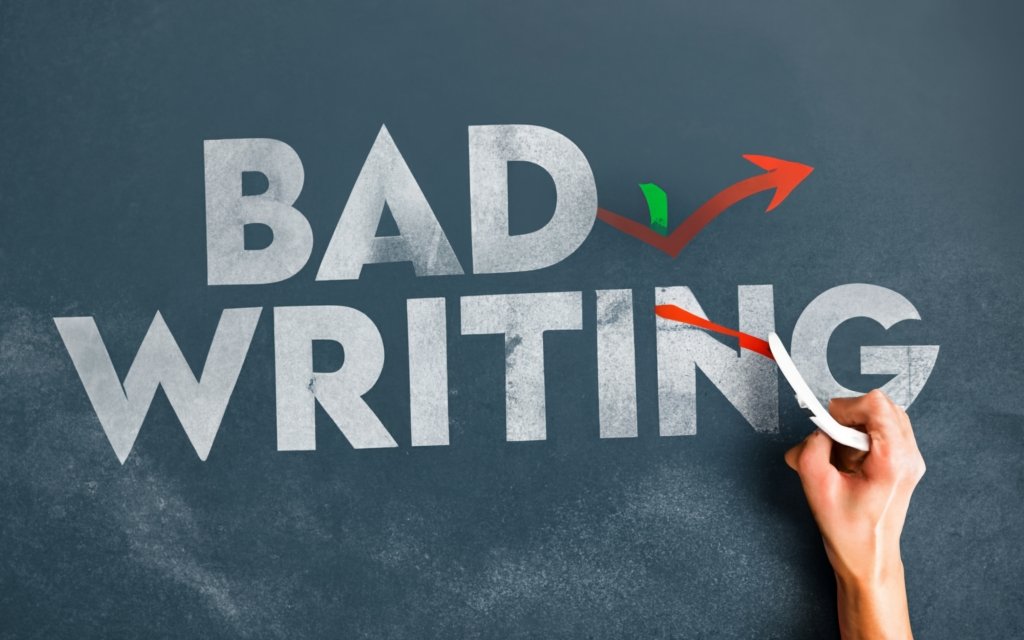
Bad Email and Digital Communication Examples
Email and other digital messages are indispensable communication tools. However, poorly composed emails or inappropriate online conduct can damage your brand and relationships. Let’s explore prime examples of bad email and digital etiquette habits to avoid.
Using All Capital Letters
IT MAY BE TEMPTING TO WRITE IN ALL CAPS TO MAKE A POINT. BUT THIS IS HARD TO READ AND FEELS LIKE SHOUTING.
Online etiquette experts agree – lay off the caps lock! Writing entirely in capital letters comes across as aggressive and abrasive. Reserve capitalization only for acronyms and occasional emphasis if needed. Otherwise, compose emails calmly in normal sentence case.
Not Proofreading for Typos and Errors
When you click send without proofreading, a message littered with errors goes out into the world. Consider this example:
Hi Mr. Jones,
I wanted to follow uhp about the report I owwe you! Ill re-wrok it this weekned and hav it on you’re desk by Monda.
Repeated typos and grammatical mistakes appear careless, unprofessional, and reflect poorly on the sender. Always proofread emails or other messages before transmitting.
Overly Casual Language in Formal Contexts
The conversational tone appropriate for personal emails may not translate well to formal business contexts. Know your audience.
For example:
Yo Mike!
NGL I thought your idea in the meeting today was wack. IDK man maybe do more research B4 bringing that trash idea again. Whatevs, see ya next time!
- Jim
Even if you have an informal relationship, maintain professional decorum in work communications. Save the slang and abbreviations for personal exchanges.
Rambling Length Without Clear Purpose
You don’t always need to reply to every point or address every question in exhaustive detail. Ultra long-winded emails that never cut to the chase for fear of omitting anything signal an inability to prioritize effectively.
For example:
Hi Amanda,
I received your email about the upcoming product launch. Thanks for providing the background information on when initial planning started and the various team members involved. I appreciate you including the documentation from the focus groups and customer research. It was very thoughtful to detail the statistical survey methodology used and provide the full transcripts. Responding to your seven specific questions, the timeline seems reasonable to me based on factors 1, 2, and 3 that influence these product releases as we’ve discussed previously. In regards to your question about budget, I’d be happy to schedule a quick call with the Finance department to obtain the figures we need to proceed. The metrics you outlined seem excellent for tracking performance. I agree that we should highlight Features A, B, and C in the marketing material. However, I have a slight concern about…
This meandering reply could have been summarized in a few concise paragraphs. Trim nonessential content to keep communications focused and on point.
Poorly Structured Requests or Arguments
Logical flow improves the clarity of requests, proposals, or arguments. But disjointed, disorganized points prevent readers from following your trail of thought.
For example:
I wanted to discuss possibly attending the Digital Media conference this year. Travel and registration costs would be approximately $2,000 but great networking opportunities. I know budget is tight so may need to get creative with carpooling or deals on flights. My last conference presentation was very well received so I could definitely submit to present again. The agenda has sessions very relevant to projects I’m working on about analytics and social media strategy.
This message scatters related details instead of linking them cohesively. Grouping relevant information together in paragraphs creates a more convincing appeal:
I’d like to request attending the Digital Media conference this year. Registration and travel will likely total around $2,000. I realize budget is constrained this year, so I’m happy to take on extra duties around carpooling or booking affordable flights to reduce costs if approved to attend.
The networking opportunities would be extremely valuable. This conference is the premier event for our industry. I still benefit from contacts I made at the last conference.
I could also submit a presentation based on our recent social media analytics project, which would likely be accepted given my well-received talk last year. The agenda includes many relevant sessions on analytics and social media I could apply to current initiatives in our department.
Please let me know if I can provide any other details on the value of attending this year. I appreciate your consideration.
Logical organization, flow, and transitions help demonstrate the validity of your points.
Aggressive Tone and Bad News Delivered Harshly
“Tact” should be every professional’s middle name. You catch more flies with honey than vinegar, after all. But overly aggressive tones and blunt delivery of bad news often characterize poor digital etiquette.
For example:
John,
I’m afraid I have to inform you that you did not get the promotion. Your contributions simply haven’t measured up and your skills are not where they need to be compared to the successful candidate. You’ll have to work on improving your performance if you ever hope to be considered for advancement here. Please confirm receipt of this message.
While direct, this unnecessarily callous email provides minimal constructive feedback and leaves the recipient feeling attacked. Productive critiques balance honesty with empathy:
Hi John,
I regret to inform you that another candidate was selected for the team lead promotion. This decision was difficult, as we highly value your [contributions to Project X].
For roles at this level, we were specifically assessing [skill sets like communication, strategic thinking, and team leadership]. I encourage you to set up some time to discuss areas of opportunity for your professional development here. Please know that your work is appreciated, and I’m confident that focusing on [developing skills A, B and C] will help prepare you for future opportunities.
Let me know if you would like to schedule a meeting to talk through how we can support your growth on the team. I’m happy to answer any other questions as well.
While no one wants to deliver disappointing news, maintain a calm, constructive, thoughtful tone.
Unclear Subject Lines
The subject line acts as the headline, setting context for the message to follow. Vague, ambiguous, or misleading subject lines frustrate and confuse recipients.
For example:
Subject: Update
Hi Laura,
Kevin and I reviewed the proposal you submitted. Unfortunately we’ve decided not to move forward with that project. The cost estimates were higher than our budget will allow at this time. I’d be happy to discuss if you have any other ideas within our remaining budget. Thank you for all of your hard work putting that together.
A subject line like “Update” provides no clues about the message content. More informative subject lines cut through the noise:
Subject: Project Proposal Next Steps
Subject: Re: [Project Name] – Proposal Follow-up
Make subject lines informative previews, not clickbait.
Replying All Unnecessarily
The “Reply All” function quickly amplifies email noise instead of targeting only the relevant recipients. Be judicious.
Only include secondary recipients if:
- They were directly asked a question needing response
- They need to take a specific action
- Additional context from them is required
Otherwise, spare inboxes from unnecessary replies. Moreover, avoid replying all with sensitive information that shouldn’t be widely shared. Double check you’re only addressing the appropriate audience before clicking send.
Of course no digital communication is flawless all the time. But making the effort will distinguish you from the masses. Think before you type. Proofread before you send. Construct logical arguments respectfully.
And remember the universal golden rule of email – if you wouldn’t want it forwarded to your CEO, don’t press send.
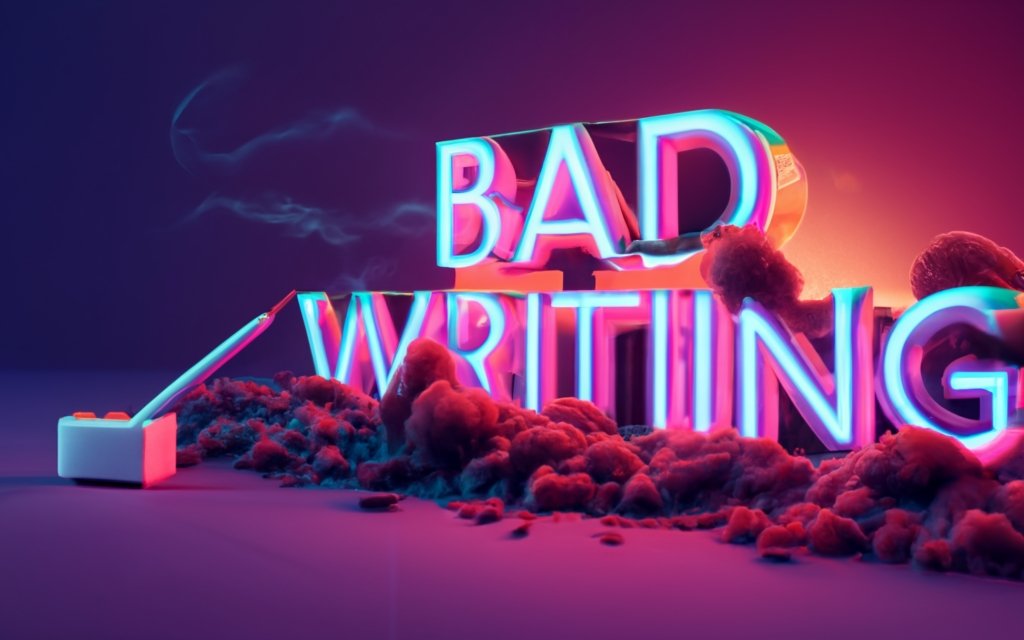
How to Fix Common Bad Writing Issues
While bad writing can take many forms, the path to improvement is clearer when you know the right techniques. Let’s explore constructive ways to fix frequent writing problems.
Read Your Work Aloud to Catch Errors
Our brains often skim over mistakes when reading silently. But when forced to speak every word aloud, errors glaringly stand out.
Try reading drafts out loud to catch things like:
- Awkward phrasing
- Overly complex sentences
- Improper punctuation
- Repetitive words
- Omitted words
The brain automatically corrects errors when reading silently. But reading aloud forces you to confront problem spots.
Use Strong Verbs and Precise Details
Weak, non-specific verbs sap energy from writing. Conversely, strong action words energize prose. Consider these examples:
Weak verb:
Mark went into his office.
Stronger verb:
Mark strode into his office.
Vivid imagery also punches up writing. For example:
Weak details:
Nancy was upset after the meeting.
Vivid details:
Nancy clutched her backpack tightly as she blinked back frustrated tears after the contentious meeting.
Choose specific verbs and details to animate your writing.
Vary Sentence Length for Better Flow
Monotonous writing hypnotizes readers – and not in a good way. Break up choppy sentence structures with an occasional long, rolling sentence. Varying sentence length improves flow.
For example:
I went to the store. I bought some milk. I also got bread and fruit. Then I went home.
Now with varied lengths:
I went to the store. I bought some milk, bread, and fruit. Then I marched back home, excited to finally make French toast for breakfast tomorrow since I had all the ingredients.
Long and short sentences intermixing read smoothly and lively.
Cut Unnecessary Words and Fillers
Concise writing trims fat by eliminating wordiness. Adverbs like “really,” “basically,” “just,” or “actually” contribute little. Be ruthless pruning filler words and phrases.
Wordy:
He basically hurried down the dark street very quickly.
Concise:
He hurried down the dark street.
Streamline writing through brevity. Strip away fluff to expose the bare essence.
Focus on Natural Dialogue, Not Fancy Tags
Fanciful dialogue tags like “exclaimed,” “implored,” or “opined” detract rather than add. Keep tags simple with “said” or “asked.” Let dialogue drive the emotional impact.
For example:
“Please don’t go into the haunted house!” Sharon implored timidly.
Natural dialogue:
“Please don’t go into the haunted house!” Sharon said.
When dialogue conveys the feeling, excessive adverbs and peculiar tags become unnecessary distractions. Trust subtext.
Ensure Logical Structure and Transitions
Writing that jumps randomly from point to point without connection bewilders readers. Use transitional phrases to guide readers logically.
Illogical sequence:
Puppies are adorable. Cars should get regular oil changes. I stayed up too late last night. Root beer is my favorite soda.
With transitions:
Puppies are adorable. On another topic, cars should get regular oil changes to prevent mechanical issues. For example, I stayed up too late last night and slept through my appointment this morning to get an oil change. I’m going to reschedule that for next week. In the meantime, I’ll grab some root beer, my favorite soda, to improve this sleepy day.
Link ideas meaningfully using transitions. Signpost direction with phrases like “In addition,” “For instance,” “On the other hand,” “In contrast,” “Moreover,” “However,” etc.
Stick to One Perspective Per Scene
Head-hopping jars readers by shifting perspectives too rapidly. Instead, depict each scene through just one character’s point of view.
For example:
Bob was frustrated as he waited for Lauren to get ready. This was so typical, and he worried they’d be late. Lauren resented Bob’s frustration. Didn’t he understand how much effort she was making to look nice for their anniversary dinner?
With consistent perspective:
Bob tapped his foot impatiently. Lauren was still getting ready, and at this rate they’d be late for the reservation. Didn’t she understand how important tonight was? He took a deep breath, trying to hide his frustration.
Remaining in one viewpoint establishes narrative coherence. Change perspectives only when transitioning to a new scene or chapter.
Research Proper Grammar and Mechanics
Knowing standard grammar conventions helps minimize errors in writing. Brush up on troublesome areas like:
- Proper punctuation
- Correct word usage and contexts
- Avoiding double negatives or dangling participles
- How to properly use pronouns, modifiers, etc.
- Formatting dialogue and quotations
Solid grammar and mechanics polish writing. Commit to continuous improvement by researching and learning formal rules.
With attentiveness and practice, these strategies can remedy a wide range of common writing weaknesses. The path to powerful writing is paved with patience. Don’t get frustrated. Great writing is often realized through multiple drafts. Roll up your sleeves, get constructive feedback, and work towards communicating your ideas clearly.
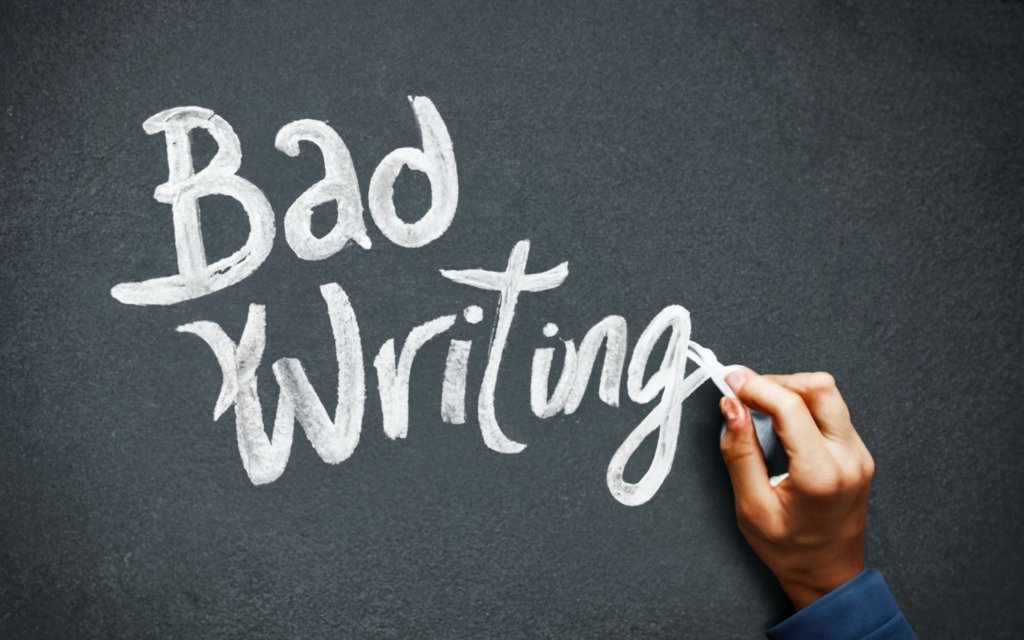
Best Practices for Polishing Your Writing
Rendering a rough draft publication-ready requires thoughtful refinement. Let’s explore techniques to polish and perfect prose.
Take Breaks and Revisit with Fresh Eyes
When you stare at a draft for too long, your brain glosses over issues. Step away, then approach it later with renewed objectivity.
After a break you may notice:
- Awkward phrasing
- Ideas needing reorganization
- Passages that meander
- Grammar mistakes
Fresh eyes help you evaluate writing more critically. Don’t obsess endlessly over a first draft. Take a breather, then return to polish.
Share Your Work and Invite Feedback
Trusted readers provide an invaluable test audience. Ask them:
- Are there sections that are confusing?
- Does the narrative flow logically?
- Do the characters and scenes feel realistic?
- Is the message clear?
Listen carefully, without ego. Other perspectives illuminate improvements.
When soliciting feedback:
- Seek readers familiar with your genre/style
- Prioritize constructive critiques over empty praise
- Take notes on consistent issues raised
- Synthesize feedback before rewriting
Feedback arms you with insights to refine the work.
Study Examples of Excellent, Effective Writing
Reading analytically exposes techniques that master writers employ. Make note of ones you can adopt:
- Vivid yet concise descriptive language
- Seamless blending of dialogue and action
- Skillful narrative pacing and scene structure
- Establishing mood and atmosphere subtly
- Weaving in backstory or exposition naturally
Emulate the hallmarks of excellence you observe.
Make Edits for Clarity, Precision, and Conciseness
Muddy prose cries out for clarification. Prune away ambiguity and extraneous verbiage.
Clarify meaning:
- Explain unfamiliar terms
- Provide context as needed
- Use precise language
Write concisely:
- Eliminate unnecessary words
- Break up dense paragraphs
- Tighten rambling sentences
Add precision:
- Choose specific nouns and verbs
- Include vivid sensory details
Refine prose to communicate ideas accurately and succinctly.
Read Your Draft Backwards to Spot Problems
Our brains auto-correct mistakes when reading forward. Reading sentences or paragraphs in reverse short-circuits this tendency.
Backward reading exposes:
- Typos
- Awkward constructions
- Flaws in grammar
- Missing words
Try reading individual sentences backward, then entire paragraphs. This technique disrupts familiar patterns to highlight issues.
Develop Your Own Editing Checklist
Establish a personal checklist to polish every piece:
- Trim verbosity
- Check formatting
- Fix grammar/mechanics
- Strengthen word choices
- Enhance sentence structures
- Remove redundancy
- Verify facts/data
- Ensure logical flow
- Personalize with factors unique to your writing.
These prompts stimulate a thorough self-edit. Over time, polish your process by refining the checklist.
Additional techniques to enhance your editing skills:
- Use online tools like Grammarly cautiously
- Read work aloud to improve flow
- Try rewriting/summarizing paragraphs in your own words
- Imagine you are the intended reader
- Set writing aside for a few days between drafts
- Print out copies to review on paper
Take your writing to the next level through rigorous, layered editing. Avoid quick once-overs that miss opportunities for improvement. Writing excellence emerges gradually, sharpened by an editor’s mentality.
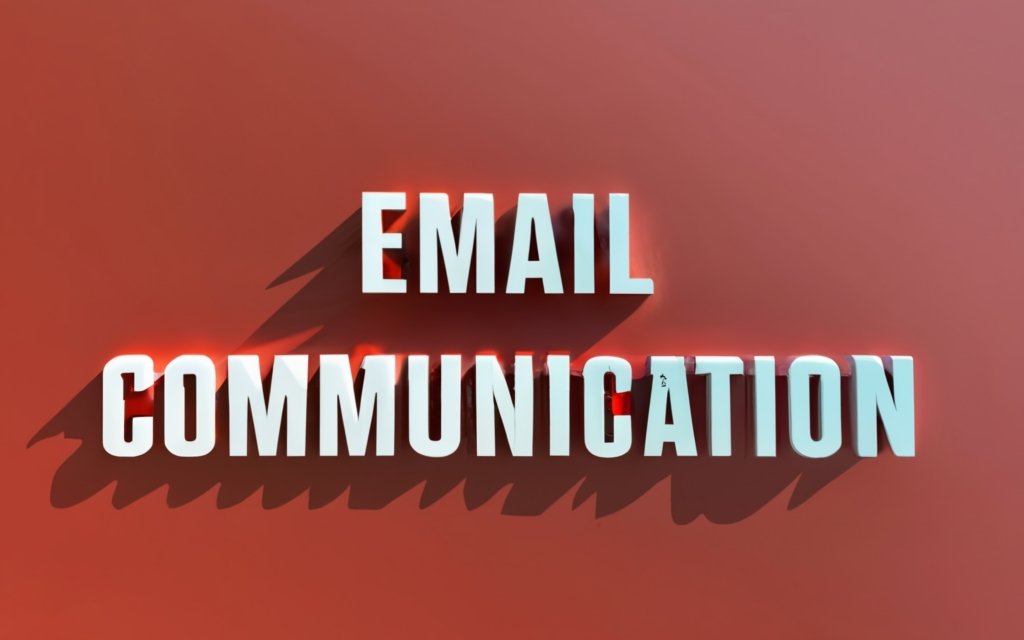
Avoiding Bad Writing in Professional Communications
In the workplace, written communication represents you. Poorly composed emails, reports, presentations, or memos undercut your professionalism. Here are techniques for polished business writing.
Plan All Emails and Documents Thoroughly
With emails and documents, strategic planning prevents problematic writing. Consider key elements in advance:
Define the purpose – What exact information needs conveying? What requests or calls to action are being made?
Know your audience – What background knowledge or context do they have? How formal should the tone be?
Organize logically – Structure writing in coherent sections. Lead with key points. Include relevant details.
Write drafts – Brainstorm ideas first. Compose initial drafts focused on substance, not style.
Set documents aside briefly – Once you have a draft in place, step away before editing. Even 15 minutes clears your head.
Edit ruthlessly – Trim unnecessary content. Refine phrasing. Check facts. Perfect grammar and style.
Thorough planning yields polished, professional communications. Never dash off casual or rushed business writing.
Use a Formal Tone and Clear Language
Informal language appropriate for texts or social media falls flat professionally. Business writing requires elevated decorum.
Elements of a formal tone:
- Full sentences and proper punctuation
- Avoiding slang, idioms, or abbreviations
- Clear, unambiguous language
- Polite and courteous wording
- A level of formality suiting context and audience
Additionally, define unfamiliar terms, acronyms, or concepts. Use language precisely tailored to recipients’ knowledge base. Clarity prevents miscommunications.
Proofread for Errors Before Sending
Nothing undercuts your credibility like obvious errors. Set a procedure for meticulous proofing.
Editing best practices:
- Allow time between drafts to refresh your eyes
- Read aloud slowly to catch mistakes
- Check for proper grammar, spelling, and punctuation
- Verify facts, figures, citations
- Review organization, clarity, concision
- Ensure consistency in formatting
- Revise unclear passages
- Confirm you addressed all key points
Refine writing until no flaws remain. Avoid reputation-damaging mistakes through rigorous proofreading.
Keep Emails Focused With Clear Subject Lines
Subject lines preview email content in a few words. But neglected subject lines baffle recipients.
Elements of strong subject lines:
- Summarize content clearly
- Include keywords for quick scanning
- Provide key context upfront
- Set an appropriate tone
- Avoid cryptic phrases like “Update”
For example:
Poor: Meeting
Better: Recap of Budget Meeting – Revised Figures
Sharpen subject lines to guide the reader effectively.
Review and Revise to Remove Redundancies
Wordiness weakens writing through needless repetition. Streamline text by pruning redundancies.
Watch for:
- Repeating information stated elsewhere
- Long-winded explanations that meander
- Overuse of intensifiers like “very” or “extremely”
- Verbose phrases instead of concise words
For example:
Wordy: I am sending this email to inform you that I will be unable to attend the upcoming meeting scheduled for Friday.
Concise: I cannot attend Friday’s meeting.
Editing tightens text while preserving meanings. Be concise.
Double-Check Facts, Names, and Contact Information
Before sending professional documents:
- Verify data and statistics cited
- Ensure names are spelled properly
- Check contact information is current
- Confirm meeting dates/times if referenced
- Review calculations or formulas
Submitting incorrect information suggests carelessness. Protect your reputation by confirming accuracy in communications.
While crafting flawless writing takes practice, mastering business communications basics reinforces competence. Plan thoroughly, respect audience needs, edit diligently, focus each piece, and confirm details. Honing these fundamental skills helps establish you as a clear, reliable, and polished professional through your writing.

Key Takeaways: Identifying and Avoiding Bad Writing
The path to powerful writing involves recognizing and avoiding common pitfalls. Here are key lessons:
- Vague, dense language obscures meaning. Be specific and clarify concepts.
- Walls of text are daunting. Insert regular paragraph breaks to aid flow.
- Limit overused adjectives and adverbs. Use judiciously for emphasis.
- Show, don’t tell, through vivid sensory details. Invite immersion.
- Clichés and idioms feel stale. Pursue fresh, original expressions.
- Grammar and punctuation errors distract readers. Master standard conventions.
- Organize writing logically with transitions between ideas.
- Only include essential details that advance the narrative. Avoid tangents.
- Inconsistencies undermine believability. Characters and events need coherence.
- Stilted dialogue feels false. Craft natural, authentic conversations.
- Head-hopping disorients. Adopt a consistent perspective.
- Proofread meticulously before transmitting writing. Typos and errors feel unprofessional.
- Match formality of tone to audience and context. Avoid overly casual language.
- Structure requests clearly. Make logical appeal through organization.
- Summarize key content in email subject lines. Help recipients prioritize messages.
- Remove unnecessary words and redundancies to tighten text.
- Take breaks between drafts to revisit writing with fresh eyes.
- Ask trusted readers for constructive feedback to gain valuable perspectives.
- Read critically to uncover techniques used by masterful writers worth emulating.
- Refine prose through multiple drafts to enhance clarity, concision, and precision.
- Apply customized checklists to self-edit and polish writing.
Conquering common writing pitfalls takes attentiveness and practice. But the journey leads to more powerful communication and storytelling skills.
Here are some frequently asked questions about identifying and avoiding bad writing:
Frequently Asked Questions
Q: What are some hallmarks of bad writing?
A: Common red flags include vague language, walls of text, overuse of adjectives/adverbs, excessive telling vs. showing, clichés, grammar/punctuation errors, confusing organization, irrelevant tangents, inconsistent characters and plot, stilted dialogue, head-hopping perspectives, and unprofessional typos.
Q: Should I avoid adverbs and adjectives completely?
A: Not necessarily. The key is using them judiciously and selectively for emphasis, rather than peppering your writing with numerous descriptors continuously. Avoid reliance on adverbs/adjectives as a crutch.
Q: How can I improve my sentence structure?
A: Vary sentence length and structure to improve flow. Short, choppy sentences can sound robotic. But long, rambling sentences overwhelm. Blend short and long sentences. Break up dense sections with paragraph breaks. Use transitions between ideas.
Q: What are some ways to strengthen my vocabulary?
A: Read widely and make note of vivid words. Use a thesaurus and dictionary to find alternatives to overused terms. Avoid clichés and idioms by pushing for original metaphors and descriptions tailored to your story.
Q: How do I fix problems with pacing and scene structure?
A: Ensure scenes have narrative purpose and plausible action. Omit mundane everyday details that distract from plot progression. Adjust pacing by spreading essential exposition across scenes. Break lengthy sections into multiple scenes.
Q: What is “head-hopping” and why is it problematic?
A: Head-hopping refers to switching narrative perspective within the same scene, from one character’s thoughts/feelings to another’s. This confuses readers. Establish point-of-view per scene, and transition between perspectives in separate sections.
Q: How can I improve my editing process?
A: Take breaks between drafts to revisit with fresh eyes. Read work aloud and backwards to expose new errors. Use checklists and online tools cautiously. Invite constructive feedback. Continually refine writing through multiple drafts.
Q: What tips can elevate my professional communications?
A: Plan all emails and documents thoroughly. Adopt a formal tone suited to audience and context. Proofread extensively before sending. Craft clear subject lines. Remove redundancies and wordiness. Verify all facts and data.

